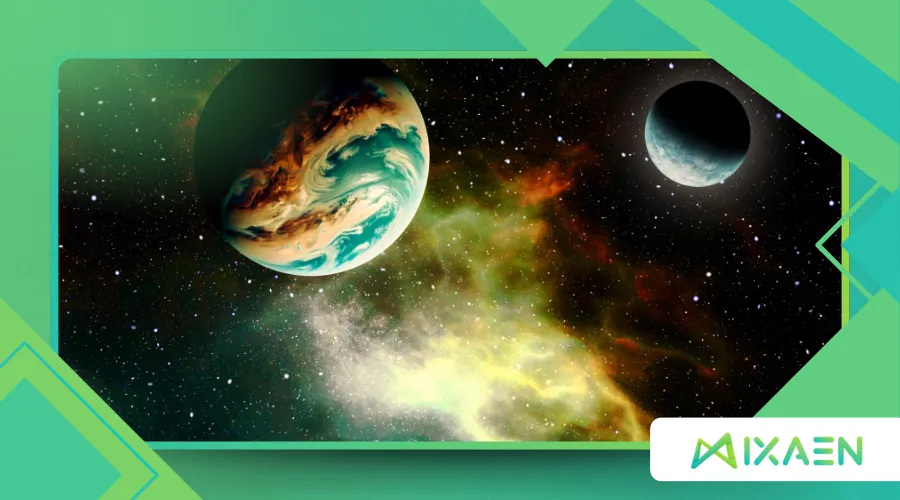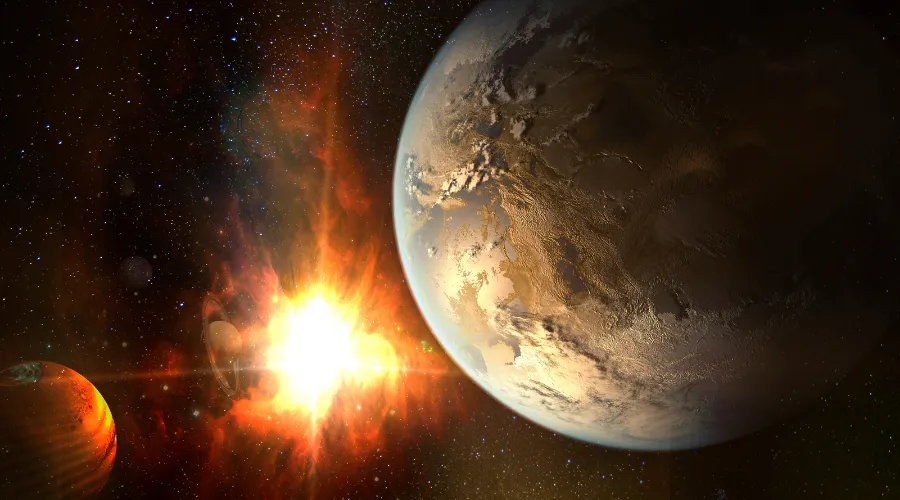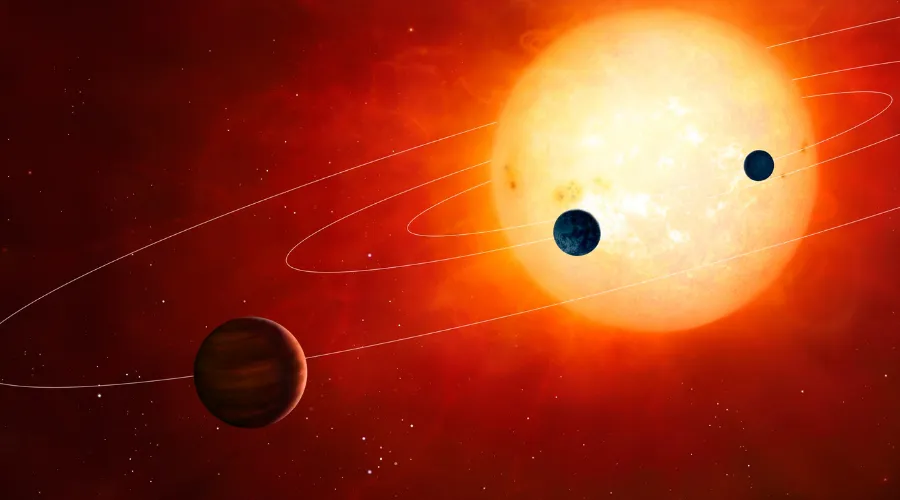What Exoplanet Gravity Tells Us About Life’s Possibilities

Exoplanet gravity shapes the potential for life beyond Earth, acting as a cosmic sculptor that molds atmospheres, chemistry, and biological possibilities.
Anúncios
The force that anchors planets to their stars also dictates whether alien worlds can sustain the delicate balance required for life as we know it—or something entirely different.
As astronomers peer deeper into the cosmos with tools like the James Webb Space Telescope, the role of gravity in defining habitability has emerged as a critical puzzle piece.
Could the gravitational pull of distant worlds unlock secrets about life’s adaptability?
This exploration dives into how gravity influences exoplanet environments, from atmospheric retention to biological evolution, offering fresh insights into the search for extraterrestrial life.
The Invisible Hand of Gravity
Gravity is the architect of planetary systems, determining how tightly a world holds onto its atmosphere.
On exoplanets—planets orbiting stars beyond our Sun—gravity dictates whether volatile compounds like water vapor or methane can linger long enough to support life.
A planet with low gravity, like a small rocky world, might struggle to retain a thick atmosphere, leaving it barren like Mars.
Conversely, high-gravity gas giants, such as Jupiter, trap dense gaseous envelopes that may harbor exotic ecosystems in their upper layers.
Consider an exoplanet like Kepler-442b, a rocky world 1,200 light-years away.
Its estimated surface gravity, roughly 1.3 times Earth’s, suggests it could hold a substantial atmosphere, potentially rich in water vapor.
This gravitational strength might allow liquid water—a key ingredient for life—to pool on its surface, assuming other conditions align.
Yet, gravity’s influence extends beyond retention.
It shapes atmospheric pressure, which affects chemical reactions critical to life’s chemistry.
Recent studies indicate that understanding the relationship between gravity and atmospheric composition is vital for assessing habitability on distant worlds.
| Exoplanet | Estimated Surface Gravity (g) | Atmospheric Potential |
|---|---|---|
| Kepler-442b | ~1.3 Earth’s | Likely retains water-rich atmosphere |
| TRAPPIST-1e | ~0.9 Earth’s | Thin atmosphere, possible water retention |
Gravity’s Role in Shaping Chemistry
The interplay between exoplanet gravity and chemistry is a frontier in astrobiology.
Strong gravity compresses atmospheres, increasing molecular collisions and potentially accelerating reactions that form complex organic molecules.
On high-gravity worlds, denser atmospheres could foster prebiotic chemistry, where amino acids or nucleotides might assemble under pressure.
However, excessive gravity could crush delicate molecular structures, stifling life’s emergence.
Imagine a super-Earth, twice Earth’s mass, orbiting a dim red dwarf.
Its robust exoplanet gravity might create a high-pressure environment where nitrogen and carbon dioxide dominate, fostering unique chemical pathways.
Research from the University of Cambridge in 2023 suggests that super-Earths with 1.5–3 times Earth’s gravity could enhance the formation of nitrogen-based compounds, critical for protein synthesis.
This statistic—derived from computational models of atmospheric chemistry—hints that gravity could tip the scales toward life-friendly conditions on certain worlds.
Yet, not all planets benefit.
Low-gravity exoplanets, like sub-Neptunes, may lose light elements like hydrogen, leaving heavier gases that resist forming organic compounds.
The balance is delicate: too little gravity, and the atmosphere escapes; too much, and pressure stifles biochemical diversity.
Exploring the chemical potential of exoplanets could reveal new pathways for life that we have yet to imagine.
+ Photosynthesis on Exoplanets: Would Alien Plants Be Purple?
Life’s Adaptation to Extreme Gravity
Could life adapt to wildly different gravitational fields?
On Earth, organisms thrive under 1g, but exoplanet gravity introduces extremes.
Picture a hypothetical creature on a high-gravity super-Earth, its skeletal structure squat and robust, resembling a turtle with reinforced limbs to withstand crushing forces.
Its metabolism might prioritize energy efficiency, as movement requires more effort.
Conversely, on a low-gravity world like a mini-Neptune, lifeforms could evolve elongated, delicate forms, floating through misty atmospheres with minimal resistance.
These adaptations aren’t mere speculation.
Earth’s ecosystems offer clues: deep-sea creatures endure crushing pressures, while birds exploit low effective gravity through flight.
Exoplanet gravity could push evolution in unexpected directions, producing lifeforms unlike anything in our biosphere.
For instance, on a low-gravity moon like TRAPPIST-1e, microbial life might drift in aerosolized droplets, sustained by weak gravitational pull and abundant moisture.
Research into extremophiles on Earth provides a promising framework for understanding how life could thrive under different gravitational conditions.
| Gravity Level | Potential Lifeform Adaptations | Example Environment |
|---|---|---|
| High Gravity (>2g) | Compact, sturdy bodies; slow metabolism | Super-Earths like LHS 1140b |
| Low Gravity (<0.5g) | Lightweight, floating structures | Sub-Neptunes or large moons |

Gravity and Habitability Zones
The concept of a habitable zone—the region around a star where liquid water can exist—is incomplete without considering exoplanet gravity.
A planet’s ability to retain water depends on its gravitational pull, which interacts with stellar radiation and atmospheric composition.
A 2024 study in Nature Astronomy found that planets with 0.8–2.0 times Earth’s gravity are optimal for maintaining liquid water under a range of stellar conditions.
This range balances atmospheric retention with manageable pressure, creating a “gravitational Goldilocks zone.”
Gravity also influences geological activity, another pillar of habitability.
Strong exoplanet gravity can drive tectonic processes, recycling nutrients and stabilizing climates.
On Earth-like planets, this could mean volcanic activity releasing gases that sustain atmospheres.
However, excessive gravity might suppress volcanism by locking crusts in place, as seen in models of massive super-Earths.
The interplay between gravity, geology, and habitability is a dynamic puzzle astronomers are only beginning to solve.
For more information on habitability zones and exoplanet research, visit NASA’s Exoplanet Exploration.

An Analogy: Gravity as a Cosmic Dance
Think of exoplanet gravity as a cosmic dance partner, guiding a planet’s steps through the rhythm of habitability.
Too forceful, and the dance becomes a crush; too weak, and the planet spins away, unmoored.
The perfect partner—neither overpowering nor feeble—creates harmony, allowing atmospheres, chemistry, and life to flourish.
This analogy underscores gravity’s role as both a constraint and an enabler, shaping the possibilities for life across the galaxy.
The intricate balance of forces at play illustrates how gravity not only influences physical characteristics but also the potential for life to emerge and evolve in various environments.
Challenges in Measuring Exoplanet Gravity
Determining exoplanet gravity remains a technical hurdle.
Astronomers infer it from a planet’s mass and radius, measured via transits and radial velocity methods.
The Kepler and TESS missions have provided data on thousands of exoplanets, but precise gravity estimates are tricky.
Small errors in radius or mass calculations can skew results, complicating predictions about habitability.
Future missions, like the European Space Agency’s ARIEL, aim to refine atmospheric and gravitational data, offering clearer insights into life’s potential.
The challenge is compounded by stellar variability.
Red dwarfs, which host many known exoplanets, emit flares that can strip atmospheres from low-gravity worlds.
High-gravity planets, however, might resist this erosion, preserving conditions for life.
This dynamic makes gravity a critical variable in the search for habitable worlds.
Advancements in observational technology will continue to enhance our understanding of these gravitational influences on exoplanets.
++ Ocean Worlds: The Search for Life on Water-Covered Exoplanets
The Future of Gravity-Centric Exploration
As technology advances, exoplanet gravity will guide the search for life.
Next-generation telescopes, like the Extremely Large Telescope, will probe atmospheres for biosignatures—gases like oxygen or methane that hint at life.
Gravity will help prioritize targets: planets with Earth-like gravity are prime candidates, as they likely balance atmospheric retention and chemical diversity.
Missions targeting super-Earths and mini-Neptunes will test theories about gravity’s role in evolution, potentially revealing whether life can thrive under alien conditions.
Consider a future discovery: a planet with 1.8 times Earth’s gravity, orbiting a stable K-type star.
Its thick atmosphere, held by strong gravity, might teem with microbial life, detected through spectroscopic signatures of phosphine.
Such a find would reshape our understanding of habitability, proving life’s resilience across gravitational extremes.
The ongoing exploration of exoplanet gravity will not only deepen our knowledge of potential life but also inform future human exploration and colonization efforts.
Why Gravity Matters for Humanity’s Search
The study of exoplanet gravity isn’t just academic—it’s a window into our cosmic future.
Understanding how gravity shapes alien worlds informs where we look for life and how we might one day colonize them.
Planets with gravity too far from Earth’s could challenge human physiology, requiring innovative technologies for exploration.
Conversely, worlds with familiar gravity might feel like home, offering stepping stones for humanity’s galactic ambitions.
What makes exoplanet gravity so compelling is its universality.
Every world, from scorching Venus-like planets to icy super-Earths, dances to its tune.
By decoding this force, we edge closer to answering whether we’re alone—or if life, in all its forms, thrives across the stars.
As we continue to explore the universe, understanding gravity will be essential in shaping humanity’s future in space exploration and potential colonization of other worlds.
